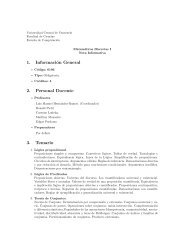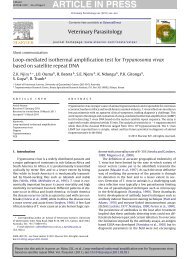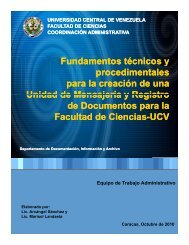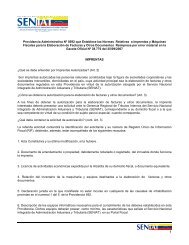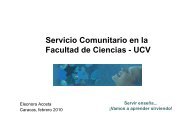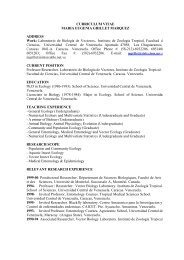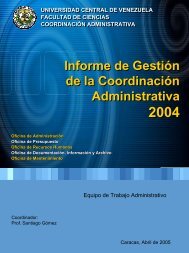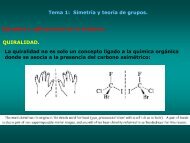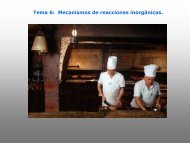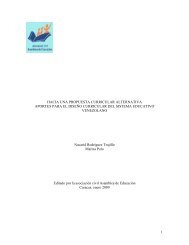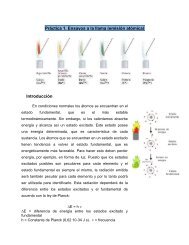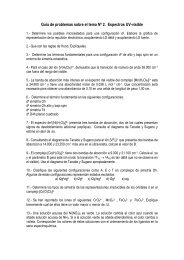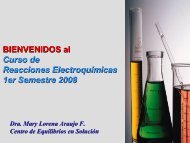Collecting and Preserving
Collecting and Preserving
Collecting and Preserving
- No tags were found...
You also want an ePaper? Increase the reach of your titles
YUMPU automatically turns print PDFs into web optimized ePapers that Google loves.
ably so that they may be read with heads of specimenstoward you.Mounting Thrips. For a detailed study, mount thripsin Canada balsam as described here. Place each specimenby itself centrally on a slide with wings, legs, <strong>and</strong> antennaespread for easy observation of structures. Most specimensshould be cleared for optimal appearance of surface detail,but a few should be left in their natural color by omittingsteps 2 <strong>and</strong> 3. Rapid identifications may be made fromtemporary mounts in glycerin or Hoyer's medium, but theyusually cause distortion. Excess or used fluids may beremoved at each step with a pipes.(1) Soak specimen for 24 hours in clean 60 percentethanol to remove collecting fluid.(2) Macerate in cold 5 percent sodium hydroxide*solution for 30 minutes or up to 4 hours for especially darkspecimens.(3) Wash briefly in 50 percent ethanol <strong>and</strong> then leavein 60 percent ethanol for 24 hours.(4) Dehydrate through a series of ethanol solutions:70 percent for 1 hour, 80 percent for 2 hours, <strong>and</strong> 100percent for 10 minutes (change alcohol once). Place inclove oil until clear (30 seconds to 10 minutes). Spreadappendages carefully at each stage. Dehydration <strong>and</strong>clearing may be promoted by puncturing thoracic <strong>and</strong>abdominal membranes in one or two places with a fineneedle.(5) Place ventral side uppermost on 13-mm coverslip in Canada balsam, then lower slide onto cover slip.This method is easier to control than the usual method oflowering cover slip onto slide with forceps.(6) Use two labels on slide, one at each side ofspecimen, with host, locality, altitude, date, <strong>and</strong> collector'sname on right-h<strong>and</strong> label <strong>and</strong> determination <strong>and</strong> sex dataon left-h<strong>and</strong> label.(7) Cure in oven at 40° C within a few minutes ofpreparation, or leave for up to 6 weeks for completecuring.Mounting Mites Other Than Eriophyids. Mites aremost easily mounted if collected in AGA solution (see p.94). Mount those collected in 70-80 percent ethanol onslides as soon as possible. The following procedures donot apply to mites of the family Eriophyidae:(1) Place drop of Hoyer's medium (see p. 94) incenter of clean 1- by 3-inch microscope slide.<strong>Collecting</strong> <strong>and</strong> <strong>Preserving</strong> Insects <strong>and</strong> Mitesglass, or petri dish. Avoid pouring too much fluid from vialinto dish; the less fluid, the easier it is to pick out themites. The mites may be removed from the host or fromthe fluid by dipping a needle into the Hoyer's medium onthe slide <strong>and</strong> then quickly touching the mite with it.(3) Place single specimen in medium on slide. Pressspecimen to surface of slide <strong>and</strong> spread all legs laterally.Most mites should be mounted dorsoventrally, but malesof many species, such as those of the Acaridae <strong>and</strong>Tetranychidae, should be mounted laterally to allowexamination in profile of the specifically characteristicaedeagus. Some mites may require a small body punctureto eliminate the contents. Heavily pigmented mites may becleared in a solution of lactophenol before mounting. Thesolution may be heated to hasten clearing.(4) With forceps, carefully place clean, small (13-mm or smaller) cover slip on mite in Hoyer's medium.Gently press cover slip with forceps to hold mite inposition.(5) Place slide on hotplate set at 65° C <strong>and</strong> remove itrapidly when single bubble forms in Hoyer's medium.Avoid more bubbling or mite will be displaced.(6) Turn slide so anterior part of mite is directedtoward you.(7) Place label on slide to right of cover slip; host,locality, collector, date, <strong>and</strong> serial number data should beshown on this label.(8) Place slide in oven at 45°-50° C for 24 hours orlonger to cure <strong>and</strong> solidify the Hoyer's medium. The slidemust be kept horizontal until the medium is firm <strong>and</strong> thereis no danger of the cover slip moving.(9) After removing slide from oven, ringing coverslip with additional Hoyer's medium helps to prevent themount from drying out.(2) Remove mite directly from host, or pour specimensfrom collecting vial into small casserole, watch68



